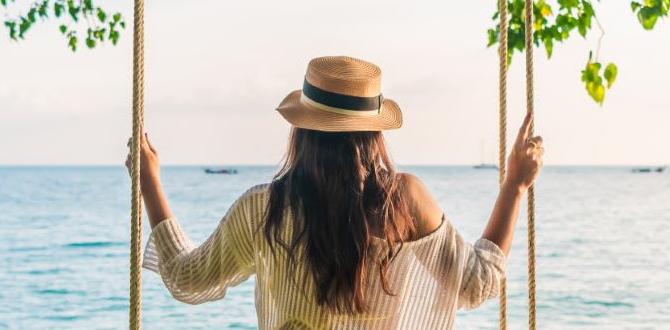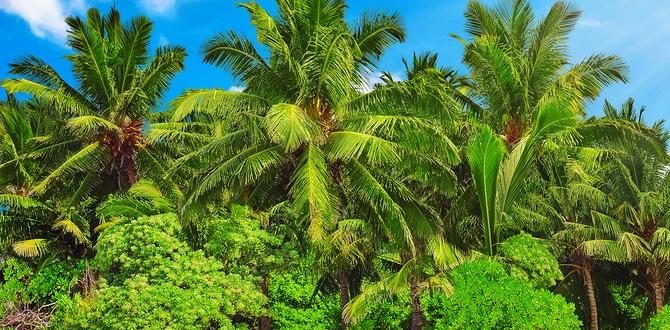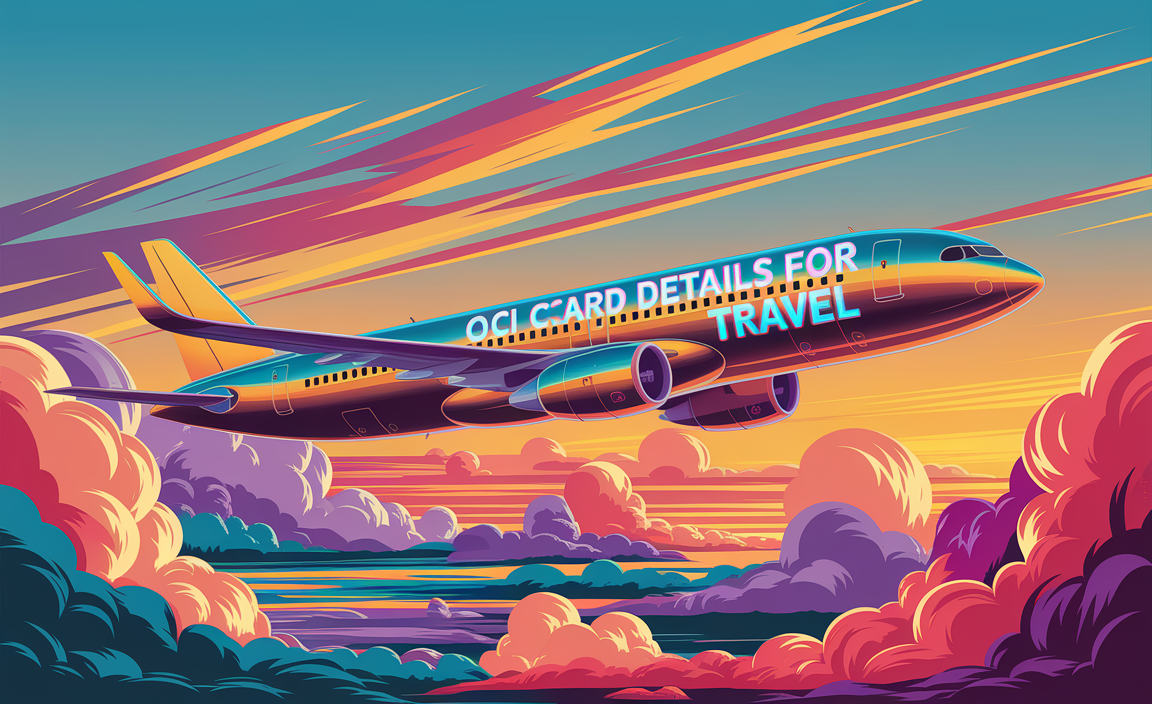Traveling Bolivia on a budget is entirely achievable with smart planning! This guide offers essential tips covering transportation, accommodation, food, and activities to make your adventure both affordable and unforgettable.
Bolivia is a dream destination for many travelers, but concerns about costs can sometimes dim that excitement. You might be wondering if it’s possible to explore its stunning landscapes and vibrant cultures without breaking the bank. The good news is, yes, it absolutely is! With a few insider tips and a willingness to embrace local experiences, your Bolivian adventure can be surprisingly affordable.
This guide is here to walk you through everything you need to know, simplifying your planning process every step of the way. We’ll cover how to save money on getting around, where to stay, what to eat, and how to make the most of Bolivia’s incredible attractions without overspending. Get ready to discover a world of adventure that’s kind to your wallet!
Understanding Bolivia’s Affordability
Bolivia is renowned as one of South America’s most budget-friendly countries. This affordability stems from a combination of factors, including a lower cost of living compared to its neighbors, a reliance on local produce, and a vibrant domestic tourism industry that keeps prices competitive. For savvy travelers, this translates into an opportunity to experience a rich and diverse country without extensive expenditure. The currency, the Boliviano (BOB), offers favorable exchange rates for many international visitors, further enhancing its appeal.
Essential Budget-Saving Tips
Making your money stretch further in Bolivia is all about making informed choices. Here are some key strategies to keep your expenses low while maximizing your experience.
Transportation on a Dime
Getting around Bolivia can be a significant part of your budget, but there are plenty of economical ways to travel between destinations and within cities.
Intercity Travel
- Local Buses: For the truly budget-conscious and adventurous, local long-distance buses are the cheapest option. They connect most towns and cities, though comfort levels can vary greatly. Journeys can be long and winding, especially through the Andes, so pack snacks and patience!
- “Micro” Buses & Vans: Within cities and for shorter intercity routes, minibuses (often called ‘micros’) and shared vans (‘trufis’ or ‘vans’) are incredibly cheap. They follow fixed routes and stop frequently.
- Overnight Buses: To save on accommodation costs and travel time, consider overnight buses for longer distances. Many companies offer ‘cama’ (bed) or ‘semi-cama’ (semi-bed) seats that recline significantly, making sleeping possible. Book reputable companies like Todo Turismo or Wara, which often have Wi-Fi and toilets.
- Trains: Bolivia has a limited but scenic train network, particularly in the Altiplano region connecting Oruro, Uyuni, and Villazón. While not always the cheapest, it can be a more comfortable and picturesque way to travel certain routes. Check the FCA (
Ferrocarril de Antofagasta a Bolivia) website for schedules and fares. - Flying (Sparingly): For very long distances or when time is critical, domestic flights are an option. Airlines like BoA (Boliviana de Aviación) offer relatively affordable fares if booked in advance, but this will likely be your most expensive transport option.
Local City Transport
- Walking: Many of Bolivia’s cities, especially colonial centers like Sucre and Potosí, are very walkable. This is the best way to soak in the atmosphere and discover hidden gems.
- Taxis: Negotiate fares before getting in! It’s wise to agree on a price for your journey beforehand. For safety, especially at night, ask your accommodation to call a reputable taxi company for you.
- Rideshare Apps: While not as prevalent as in other countries, some cities may have options, but traditional taxis and local buses remain the dominant and cheapest forms of transport.
Accommodation Sweet Spots
Where you rest your head doesn’t have to cost a fortune. Bolivia offers a range of budget-friendly options.
- Hostels: Dominate the budget accommodation scene in popular tourist areas. They offer dorm beds and private rooms, often with communal kitchens and social spaces. Expect to pay anywhere from $5-$15 USD per night for a dorm bed.
- Guesthouses (Hospedajes/Residenciales): These are often family-run establishments offering basic but clean rooms. They provide a more local feel and can be significantly cheaper than hostels.
- Budget Hotels: Even in larger cities, you can find simple hotels that offer private rooms with en-suite bathrooms at reasonable prices, typically $15-$30 USD per night.
- Booking Platforms: Websites like Booking.com and Hostelworld are useful for comparing prices and reading reviews. However, sometimes you can find better deals by simply walking into a place and negotiating directly, especially during the low season.
- Consider Location: While staying slightly outside the absolute center can save money, ensure it’s still easily accessible by public transport or a short walk to key attractions.
Eating Well on a Budget
Bolivian cuisine is hearty and delicious. Eating like a local is one of the best ways to save money and get an authentic taste of the country.
- Menu del Día: This is your best friend! Found in most local eateries (often unmarked, just look for crowds of locals), it’s a fixed-price meal typically including soup, a main course, and sometimes a small dessert or drink. Expect to pay $1.50-$4 USD.
- Markets: Visit local markets (like the Witches’ Market in La Paz or the Central Market in Sucre) for incredibly cheap and fresh food. You can buy fruits, vegetables, snacks, and even find food stalls serving delicious local dishes.
- Street Food: Be adventurous! Empanadas, ‘salteñas’ (a type of baked empanada), and various grilled meats or skewers are common and affordable street food options. Ensure the food is cooked fresh and hot.
- Cook Your Own: If your accommodation has a kitchen, hit the local market for fresh produce and cook some of your own meals. This is a great way to save money, especially for breakfast and lunch.
- Avoid Tourist Restaurants: Restaurants in prime tourist squares or directly facing major attractions will almost always be more expensive. Wander a few blocks away to find more authentic and affordable eateries.
Activities and Sightseeing Without Spending a Fortune
Bolivia’s natural beauty and cultural heritage are its biggest draw, and fortunately, many of its most impressive sights are either free or reasonably priced.
- Hike and Explore: Many of Bolivia’s most stunning landscapes, from the mountains around La Paz to the trails near Samaipata, are accessible for free or a small park entrance fee.
- Free Walking Tours: Available in cities like La Paz and Sucre, these tours are a fantastic way to get oriented and learn about the city’s history and culture from a local perspective. Tip your guide generously!
- Local Festivals: If your visit coincides with a local festival or celebration, immersing yourself is a truly unforgettable and often free experience.
- Enjoy the Plazas: The central plazas in Bolivian towns are vibrant hubs of local life. Spend an afternoon people-watching, enjoying the atmosphere, and observing daily life.
- Volcano Hikes: Near La Paz, many locals hike up volcanoes like Jaen-Uta or Chacaltaya for incredible views. While some might be part of tours, independent exploration is possible.
- Salar de Uyuni Tours: While tours to the Salar de Uyuni can be a significant expense, booking 3-day/2-night tours from Uyuni or Tupiza offers the best value. Shop around and take advantage of group discounts. Compare prices and itineraries carefully.
Smart Money Management
Keeping track of your spending and accessing money safely is crucial for any budget trip.
- Cash is King: While larger hotels and tour agencies might accept cards, most local businesses, markets, and smaller eateries operate on a cash-only basis. Bolivia is still heavily reliant on cash.
- ATMs: ATMs are available in most cities and larger towns. It’s advisable to withdraw larger amounts at once to minimize transaction fees from your bank and the local ATM. Always use ATMs attached to banks for better security.
- Exchange Rates: While widely accepted, the USD can often get you a slightly better deal when exchanging cash in official exchange houses (casas de cambio) in major cities like La Paz and Santa Cruz.
- Bargaining: In markets and with taxi drivers (before the ride), polite bargaining is expected and can lead to savings. However, don’t push too hard – remember that small savings for you can mean a lot to vendors.
- Budget Tracking: Keep a simple log of your daily expenses. An app or a small notebook can help you stay aware of where your money is going and adjust your spending if needed.
Sample Budget Breakdown Per Day (USD)
This is a rough guide and can vary significantly based on your travel style and specific locations. This estimate aims for a comfortable budget traveler.
| Category | Estimated Cost (per person, per day) | Notes |
|---|---|---|
| Accommodation (Hostel/Budget Guesthouse) | $8 – $15 | Dorm bed or basic private room. |
| Food (Local eateries, markets) | $5 – $10 | Includes ‘Menu del Día’ and market snacks. |
| Local Transportation | $1 – $3 | Mostly local buses/micros. |
| Activities & Entrance Fees | $5 – $15 | Varies greatly; includes some tours, museum fees. |
| Miscellaneous (Water, snacks, souvenirs) | $2 – $5 | Small purchases. |
| Total Estimated Daily Budget | $21 – $48 | Excludes long-distance transport and major tours. |
Things to Consider for Comfort and Convenience
While budget is key, comfort and ease of travel shouldn’t be overlooked. Especially for longer journeys or when managing personal needs, a little preparation goes a long way.
- Pack Smart: Layers are essential due to Bolivia’s diverse climates. A good backpack, comfortable walking shoes, sunscreen, and a hat are non-negotiable. For those who might need them, consider packing discreet, comfortable adult diapers or child diapers for peace of mind on long bus rides or during excursions where facilities might be scarce. Brands specializing in breathable, absorbent options can make a huge difference in long-haul comfort.
- Altitude Sickness: Many popular destinations like La Paz are at high altitudes. Acclimatize slowly, drink plenty of water, avoid alcohol for the first day or two, and consider coca leaves or tea. Consult your doctor before your trip about preventative medication if you are susceptible. The Centers for Disease Control and Prevention (CDC) offers good general travel health advice.
- Water Purification: It’s highly recommended to drink bottled or purified water to avoid stomach issues. Many accommodations and tour operators provide filtered water, or you can use a water filter bottle.
- Connectivity: SIM cards are cheap and easy to buy at local kiosks. This is a good way to stay connected for navigation and communication without relying on expensive international roaming.
- Travel Insurance: This is an essential investment. It can cover medical emergencies, trip cancellations, and lost luggage, offering invaluable peace of mind when traveling on a budget where unexpected costs can be more impactful.
Popular Budget-Friendly Destinations in Bolivia
Bolivia is packed with incredible places that are also kind to your wallet:
- La Paz: Bolivia’s administrative capital is a sensory explosion. Explore the Witches’ Market, ride the incredibly cheap Mi Teleférico cable car system for stunning city views, and hike in the surrounding mountains.
- Sucre: The constitutional capital, known as the “White City,” offers beautiful colonial architecture, a relaxed atmosphere, and affordable museums and historical sites. It’s also a great place to learn Spanish.
- Potosí: Famous for its silver mines, Potosí offers a gritty, historical experience. You can take an eye-opening tour of the mines (though this can be emotionally challenging) and explore its colonial streets.
- Salar de Uyuni (Uyuni Salt Flats): While the tours can add up, the sheer spectacle of the world’s largest salt flat is a must-see. Opt for multi-day budget tours from Uyuni or Tupiza.
- Copacabana & Lake Titicaca: This charming town on the shores of Lake Titicaca offers stunning lake views and access to Isla del Sol. Boat trips and excursions are generally affordable.
- Samaipata: A small, laid-back town in the foothills of the Andes, popular with backpackers. It’s a great base for exploring El Fuerte de Samaipata (an ancient archaeological site) and nearby waterfalls.
Frequently Asked Questions
Is Bolivia safe for budget travelers?
Yes, Bolivia is generally safe for budget travelers. Like any country, it’s wise to be aware of your surroundings, especially in crowded markets and at night. Petty theft can occur, so keep your valuables secure. By sticking to well-trodden tourist paths and using common sense, most budget travelers have trouble-free journeys.
What is the best time of year to visit Bolivia on a budget?
The shoulder seasons – April to May and September to October – often offer a good balance of pleasant weather and fewer crowds, leading to potentially lower prices on accommodation and tours compared to the peak dry season (June to August). The rainy season (November to March) is the cheapest but can impact accessibility in certain regions.





